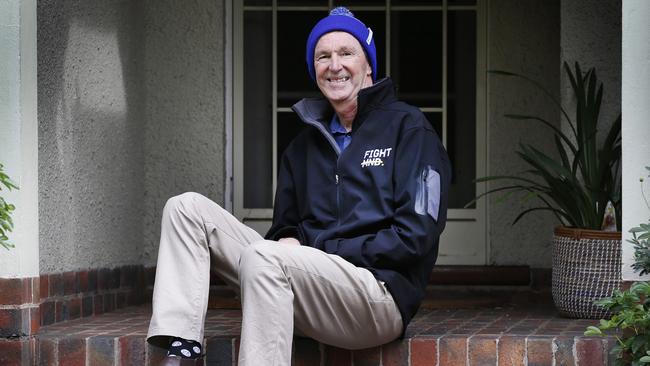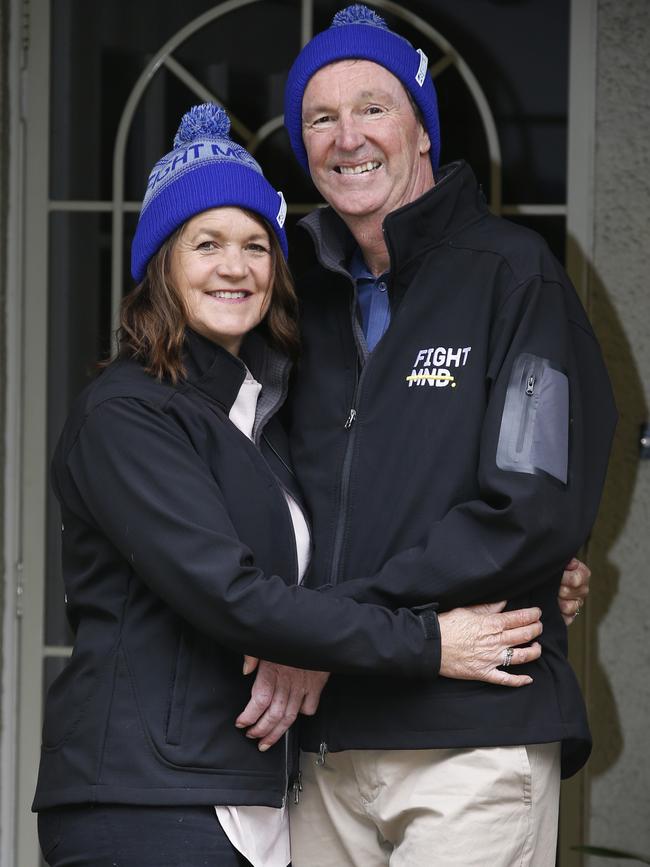Generosity sees FightMND campaign reach another record tally
This year’s FightMND campaign, led by AFL great Neale Daniher, has reached a record amount in fundraising, thanks to generous Australians. Here’s how the money will be used.

Victoria
Don't miss out on the headlines from Victoria. Followed categories will be added to My News.
An early-detection blood test, a super microscope and a promising “breakthrough” drug that could extend the life of sufferers will all be tested in the fight for a potential treatment for motor neurone disease (MND), thanks to the generosity of Australians.
FightMND will on Saturday announce a record-breaking $10.68 million in funding to be poured into 16 projects — a result of donations, including this year’s Big Freeze 6 which went virtual due to COVID-19.
The foundation, started by AFL great Neale Daniher, will see five projects boosted in Victoria — at the Florey Institute of Neuroscience and Mental Health and Deakin University.
The Florey’s Associate Professor Bradley Turner will use an already-available wonder drug — which is successfully used to treat the childhood form of MND, called Spinal muscular atrophy — to see if it can be repurposed for adult use.
The drug, spinraza, “corrects” a gene defect which causes the disease, extending the lifespan of patients and giving them control over movement.
“I think at the end of the day people with MND just want more time and we hope this drug can afford that,” Prof Turner said.
Dr Fazel Shabanpoor, also at the Florey, is developing a way to “sneak” MND-fighting drugs through what’s known as the blood-brain barrier and directly target motor neurons.
If successful, this would make treatments stronger and more effective.

Meanwhile Dr Sophia Luikinga will use the funds to develop an early-detection test by looking at how lipids — or molecules — in the muscle and spine change in mice with the disease.
This can be detected through a simple blood test and could become a way of diagnosing MND from the onset of symptoms.
“If there was an available way that could rule out (other diseases) and pinpoint towards MND — that would be hugely beneficial,” Dr Luikinga said.
The University of Wollongong, in NSW, will use a cryo-electron microscope to take a closer look at how toxic proteins build-up in people with MND.
Professor Justin Yerbury, who is battling the disease himself, said this would help “identify specific parts of the proteins to target with therapies.”
Wangaratta dad Tony Smart was diagnosed with MND in October 2018 and said such projects give hope to people living with the disease.
“If I can get one or two or three extra years or whatever it might be, to hang on for as long as I can, honestly it gives me hope,” he said.
Mr Smart was put on the F ightMND-funded Copper trial this year, which he said has hopefully “given me more time to spend with my family and friends.”
“The night that we had to sit down and tell our three boys, it was probably the hardest thing I’ve ever had to do in life.
“But if I can stall it (MND) then you just never know. I’m forever grateful.”
Mr Daniher said: “The Australian community, through the most challenging of times, have answered our call for support again by donating generously … they are the true heroes of the fight.”
MORE NEWS:
WORSFOLD DELIVERS PASSIONATE FAREWELL MESSAGE

